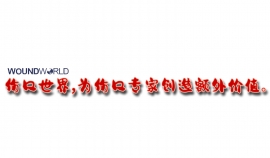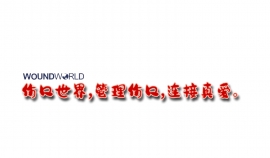
伤口世界
- 星期四, 29 12月 2022
二氧化碳点阵激光美容技术应用于色素痣治疗中临床效果分析
陈敏,高春雪
(吉林国健美容医院,吉林长春,130013)
[摘要]目的探讨激光美容技术治疗色素性疾病色素痣的临床效果,为临床使用提供参考依据。方法选取我院2016年16月~ 2018年16月所收治色素痣色素性疾病患者78例,随机分为研究组和对照组。对照组39例,予以微创切除术;研究组39例,予以激光美容针。比较两组临床表现、疗效、不良反应差异。结果研究组患者中, 创面愈合时间为(8.19士 1.76)d、创面疼痛评分为(2.21+1.07) 分,均显著低于对照组,t分别为8.253、 4.761, 差异具有统计学意义(P< 0.05) 。研究组总有效率为97.44%,明显高于对照组的79 . 49%,(P< 0.05)。研究组患者中,色素沉着12例、红斑1例,不良反应发生率为33.35%,明显低于对照组的69.23%, X2为8.672,差异具有统计学意义(P< 0.05)。结论激激光 美容技术可明显提升色素痣临床疗效,缩短治疗周期,减轻患者痛苦,且不良反应更少,安全性高,更有利于改善患者外貌美观度, 值得临床推广应用。
[关键词]激光美容; 色素痣;不良反应 DOI; 10. 19593/j. issn. 2095-0721. 2019. 01. 016
Clinical effect analysis of carbon dioxide lattice laser cosmetic technique in the treatment of pigmented nevus CHEN Min, GAO Chun-xue (Jilin National Health and Beauty Hospital, Jilin Province, 130013,China)
[ABSTRACT] Objective To investigate the clinical effect of laser cosmetology in the treatment of pigmented nevus of pigmentary diseases, and to provide reference for clinical use. Methods 78 patients with pigmented nevus treated in our hospital from June 2016 to June 2018 were randomly divided into study group and control group. 39 cases in the control group were treated with minimally invasive resection and 39 cases in the study group were treated with laser cosmetic needle. The differences of clinical manifestations,curative effects and adverse reactions between the two groups were compared. Results In the study group, the wound healing time was (8.19+1.76) D and the wound pain score was (2.21+1 .07), which were significantly lower than those in the control group, t was 8.253 and 4.761, respectively, with statistical significance (P <0.05);The total effective rate was 97.44% in the study group, which was signifcantly higher than 79.49% in the control group (P <0.05); There were 12 cases of pigmentation and 1 case of erythema in the study group. The incidence of adverse reactions was 33.33%, which was significantly lower than 69.23% and 8.672 in the control group (P <0.05);. Conclusion Laser Laser Beauty Technology can significantly improve the clinical eficacy of pigmented nevus, shorten the treatment cycle, aleviate the pain of patients, and less adverse reactions, high safety, more conducive to improving the appearance and beauty of patients, worthy of clinical application.
[KEY WORDS] laser cosmetology; pigmented nevus; adverse reactions

- 星期三, 28 12月 2022
阈下微脉冲激光在眼科疾病治疗中的应用
赵宏锟,邹悦,李云琴
引用:赵宏锟,邹悦,李云琴.阈下微脉冲激光在眼科疾病治疗中的应用.国际眼科杂志2020;20(1) :92-95
基金项目:云南省科技厅-昆明医科大学应用基础研究联合专项
资金项目[ No.2017FE467(- 146), 2018FE001(-077)];白求恩●朗沐中青年眼科科研基金( No. BJ-LM2018009J)
作者单位:(650021)中国云南省昆明市,云南省第二人民医院
昆明医科大学第四附属医院云南省眼科医院
作者简介:赵宏锟,硕士研究生,住院医师,研究方向:眼底病。
通讯作者:李云琴,博士,副主任医师,研究方向:眼底病.
liyunqin2004@ 126.com
收稿日期: 2019-06-21
修回日期: 2019-11-21
摘要
阈下微脉冲激光( SML)是-种短促重复的脉冲激光,与传统激光相比,SML不会破坏视网膜色素上皮(RPE)细胞,也不会留下激光斑,是一-种相对安全的治疗手段。SML可能的作用机制是通过重复的阈值下能量激活RPE细胞,促使热休克蛋白表达增加,从而启动RPE细胞的调节修复功能。目前SML的适应证主要有中心性浆液性脉络膜视网膜病变、糖尿病性黄斑水肿、视网膜静脉阻塞继发黄斑水肿、重度非增殖期糖尿病视网膜病变和增殖期糖尿病视网膜病变。本文旨在综述SML的作用机制及其在各适应证中的应用,以期为SML的临床应用提供参考。
关键词:阈下微脉冲激光;应用;机制;中心性浆液性脉络膜视网膜病变;糖尿病性黄斑水肿;糖尿病视网膜病变;视网膜静脉阻塞
DOI: 10.3980/j. issn.1672- 5123.2020.1.21
Process in application of subthreshold micropulse laser
Hong- -Kun Zhao, Yue Zou, Yun- Qin Li .
Foundation items: Yunnan Science and Technology Department -Kunming Medical University Joint Fund for Applied Basic Research [ No.2017FE467(-146); 2018FE001( -077)]; Bethune ●Lumitin Young Ophthalmology Research Fund ( No. BJ-LM2018009J)
The Second People's Hospital of Yunnan Province; the Fourth Affiliated Hospital of Kunming Medical University; Yunnan Eye Hospital , Kunming 650021, Yunnan Province , China
Correspondence to: Yun-Qin Li. The Second People's Hospital of
Yunnan Province ( The Fourth Affiliated Hospital of Kunming
Medical University; Yunnan Eye Hospital), Kunming 650021 ,
Yunnan Province,China. liyunqin2004@ 126.com
Received :2019-06-21
Accepted:2019-11-21
Abstract
●Subthreshold micropulse laser ( SML) consists of shortrepetitive pulses of laser. This kind of treatment is safe and cheap, and contrary to conventional laser photocoagulation ( LPC ),SML doesn ’t involve destruction of retinal cells and leave no scars. The possible mechanism of SML is to stimulate retinal pigment epithelium ( RPE) cells for the production of heat shock proteins ( HSPs) and regulate its metabolism and improve its function. The clinical indication of SML includes central serous chorioretinopathy ( CSC),diabetic retinopathy edema ( DME ), nonproliferative diabetic retinopathy ( NPDR) and proliferative diabetic retinopathy ( PDR) and macular edema ( ME) secondary to retinal vein occlusion ( RVO ). This article discussed the mechanism and safety of SML and reviewed the updates of its application.
KEYWORDS: subthreshold micropulse laser; application; mechanism ; central serous chorioretinopathy; diabetic macular edema; diabetic retinopathy; retinal vein occlusion
Citation: Zhao HK, Zou Y, Li YQ. Process in application of subthreshold micropulse laser. Guoji Yanke Zazhi ( Int Eye Sci ) 2020;20(1) :92-95

- 星期二, 27 12月 2022
低能量激光治疗在牙周组织 愈合中的作用

冯洁.刘怡
刘怡,教授、主任医师、博士研究生导师。现任首都医科大学附属北京12腔医院牙周科主任。兼任中华口腔医学会牙周病学专业委员会常务委员、口腔激光专业委员会常务委员,Oral Diseases等中英文杂志编委。主要研究领域为12腔颌面部组织再生及转化医学,尤其在宿主微环境参与调控颌面骨再生方面取得原创性成果。在Nature Medicine、Cell Stem Cell等期刊发表SCI收录论文50余篇。作为负责人承担国家自然科学基金资助课题5项。入选科技部“万人计划”、科技部创新人才推进计划“中青年科技创新领军人才”、国家自然科学基金委员会“优秀青年科学基金”获得者等。研究成果以第一完成人获中华医学科技奖三等奖、北京医学科技奖二等奖。获中国女医师协会五洲女子科技奖、中华口腔医学科技创新人物等荣誉称号。
摘要:近年来激光在口腔医学领域的应用日益广泛。在牙周治疗中。激光可用来进行牙结石去除、根面处理、软组织及骨修整等,参与到牙周治疗的各个环节,起到很好的辅助牙周治疗作用。低能量激光是指能量较温和、治疗时不产生热量的一类激光。在牙周治疗时可利用其生物刺激功能起到抑制牙周炎症、促进创12'愈合及牙周组织再生等方面的作用。文章主要介绍低能量激光的特点、作用机制及临床使用方法,为低能量激光治疗在临床的进一步推广应用提供思路。
关键词:低能量激光治疗;生物调节;牙周组织;创口愈合
中图分类号:R78文献标志码:A
Effects of low level laser therapy on periodontal tissue wound healing FENG Jie.LIU Yi.Department of periodontics,Beijing Stomatological Hospital,Capital Medical University,Beijing 100050,China Corresponding author:LIU Yi,E—mail:lililiuyi@163.com
Abstract:In recent years,laser is widely used in the field of oral therapy.In periodontal treatment,laser can be used to scaling,root planing,soft tissue and bone repair.It is a useful assistant therapeutic method for periodontal treatment.Low level laseris a kind of laser which has lower energy and does not produce heat during treatment.Low level laser therapy can inhibit inflammation,promote wound healing and enhance periodontal tissues regeneration during periodontal treatment.This review mainly introduced the characteristics, working mechanism,clinical application method of low energy laser,aiming to provide therapeutic methods for further clinical application.
Keywords:low level laser therapy;biomodulation;periodontal tissue;wound healing

- 星期一, 26 12月 2022
强脉冲光子嫩肤仪治疗面部毛细血管扩张症的价值探讨
朱淸海 1 ,姚光霄 1 ,李 静 1 ,马永红 1 ,朱淸江 2
(1. 中部战区空军医院整形美容科,山西 大同,037006;
2. 中国人民解放军 32135 部队,山西 大同,037034)
【摘 要】 目的 观察在面部毛细血管扩张症患者中光子嫩肤仪的治疗价值。方法:选择 2018 年 3 月 -2019 年 8 月,在我院进行面部毛细血管扩张症诊治的患者 144 例,按照随机数字法分为对照组和观察组,每组各 72 例。其中对照组患者采用系统药物治疗,观察组患者采用光子嫩肤仪进行相关治疗,观察两组患者治疗效果。结果:经研究结果显示,在观察组患者中,痊愈占比率为 29%,显效占比率为 51%,有效占比率为 19%,治疗总有效率为 100%,无效率为 0%,在对照组患者中,痊愈占比率为 22%,显效占比率为 43%,有效占比率为 18%,治疗总有效率为 17%,无效率为 18%,可见,观察组总有效率明显高于对照组,组间差异具有统计学意义(P<0.05)。结论:在面部毛细血管扩张症患者中采用光子嫩肤仪进行相关治疗,可取得显著疗效,因此,该治疗方法具有被临床推广使用的价值。
【关键词】光子嫩肤仪;面部毛细血管扩张症;应用价值
DOI:10.19593/j.issn.2095-0721.2020.01.012
Study on the value of intense pulse photorejuvenation instrument in the treatment of facial
telangiectasia ZHU Qing-hai1 , YAO Guang-xiao1 , LI Jing1 , MA Yong-hong1 , ZHU Qingjiang2 (1.Department of plastic surgery, Air Force hospital, central theater, Shanxi Province, 037006, China; 2. PLA 32135, Datong City, Shanxi Province, 037034, China)
[ABSTRACT] Objective To observe the therapeutic value of photon rejuvenation apparatus in patients with facial telangiectasia.
Methods From March 2018 to August 2019, 144 patients with facial telangiectasia were selected and divided into control group and observation group according to the random number method, 72 cases in each group. Among them, the patients in the control group were treated with systemic drugs, the patients in the observation group were treated with photon rejuvenation apparatus, and the therapeutic effects of the two groups were observed. Results The results showed that in the observation group, the recovery rate was 29%, the effective rate was 51%, the effective rate was 19%, the total effective rate was 100%, and the ineffective rate was 0%. In the control group, the recovery rate was 22%, the effective rate was 43%, the effective rate was 18%, the total effective rate was 17%, and the ineffective rate was 18%. It can be seen that the total effective rate of the observation group is clear The difference was statistically significant (P<0.05). Conclusion In the face of telangiectasia patients, the use of photon rejuvenation instrument for related treatment can achieve significant results, therefore, the treatment method has the value of clinical application.
[KEY WORDS] intense pulse photon rejuvenation apparatus; facial telangiectasia; application value

- 星期五, 23 12月 2022
激光在美容中的应用研究
罗乐¹,宗仁鹤¹,周章武²,俞润明² 刘成岳1
(1合肥工业大学理学院,合肥 230009);
(2安徽中医学院附属医院,合肥 230038)
摘要 本文对强激光美容和弱激光美容的治疗机理和治疗方法进行了系统的分析研究,提出了根据具体病情“对症用光”和“表里兼治”的治疗原则.为激光技术在美容中的实际应用提供一个参考.
关键词激光;热效应;针灸;美容
中图分类号:R312 文献标识码:A
1引言
随着生活水平的不断提高,人们对美容的追求也日益强烈。这一巨大的市场需求有力地促进了激光美容技术的发展.但是激光美容毕竟是一门新兴的学科,仍有许多问题有待于进一步的研究和解决.激光美容可分为强激光美容和弱激光美容:强激光美容是利用强激光进行整形外科手术来达到美容目的;弱激光美容是利用激光进行针灸和理疗来达到美容的目的.下面对这两种方法进行深入的分析和研究.
2强激光美容
从激光和生物组织的作用机制可知,激光照射生物组织被组织吸收后将产生一系列的效应,如:光热效应、光压效应、光化效应、电磁场效应和生物刺激效应等.强激光美容主要利用激光照射生物组织所产生的热效应来清除病变的皮肤组织,达到美容的目的.不同波长的激光照射生物组织产生热效应的机制也不相同,红外激光的光子能量小,生物组织吸收后只能增加生物分子的热运动导致温度升高,所以它是直接生热;可见光和紫外光的光子能量大,生物组织吸收了光子能量后引起生物分子电子态跃迁,在它从电子激发态回到基态的驰豫过程中释放能量,该能量可能引起光化反应,也可能转化为热量产生温升,所以它们是间接生热.因此,激光照射生物组织产生的热效应既和激光的波长、功率、照射时间有关,又和生物组织的光学、热学特性有关.不同的生物组织对同一种激光的吸收可以相差很大,激光照射不同的生物组织可以产生不同的结果.强激光美容正是根据这种“选择性光热作用”原理,在治疗时选择某种激光,使病变组织对它具有强吸收,而正常组织对它的吸收却很小.这样,当激光穿过正常组织到达病变组织时,可以有效地清除病变组织而又不损伤或只是轻微损伤正常组织。为了防止热传导造成的热损伤,激光的脉冲宽度或持续照射Ⅱ寸I词应小于病变组织的热驰豫时间。这样在激光加热病变组织时,病变组织来不及把热量传递给周围的正常组织、去造成正常组织的热损伤.
强激光美容技术可用于治疗各种皮肤色素异常性疾病、皮肤血管性疾病、各种斑痣和纹身、去毛发及毛发移植、创伤后的皮肤病变和皮肤新生物等.在这些疾病的治疗过程中,激光作用的对象主要是人体的皮肤组织,因此,在利用“选择性光热作用”原理时必须考虑皮肤组织的光学、热学特性。人体的皮肤主要由表皮和真皮构成,表皮一般由角质层、透明层、颗粒层、棘细胞层和基底层构成,基底单层柱状细胞连续产生角蛋白细胞,它和黑色素细胞产生的黑色素颗粒一起向上迁移,约14天移至角质层,再过1~2周从皮肤表面脱落形成脱皮.整个表皮层无血管,为灰色半透明薄膜,厚度为66~178μm,其黑色素浓度以基底层最浓,向上逐渐减弱,至角质层最淡.真皮一般由乳头层和网状层构成,其中不均匀地分布着血管、毛发、汗腺、皮脂腺、淋巴管和神经末梢等.真皮中一般没有黑色素,为白色不透明厚层,厚度为400~4000μm.一般情况下,不同皮肤病所产生的病变组织在皮肤中的位置是不相同的,而不同波长的激光照射皮肤组织时对皮肤组织的穿透深度也不相同(在表1中列出了不同波长的光对白人皮肤的穿透深度)【1】所以在治疗时应根据具体的病情选择最佳的激光参数进行治疗,即“对症用光”。如雀斑、咖啡牛奶斑、黄褐斑等皮肤色素异常性疾病主要是由于表皮中黑色素细胞所产生的黑色素异常所导致的。根据“选择性光热作用”原理,黑色素对紫外光的吸收最强,但是由于紫外光本身就可以导致黑色素异常,同时又有潜在致癌可能性,所以不适宜用紫外激光治疗色素异常性疾病.因为表皮为半透明的薄膜,对可见激光的吸收较少,而黑色素对可见激光尤其是短波长的可见激光具有强吸收,所以短波长的可见激光是治疗黑色素异常的理想激光.如Ar+激光、倍频Nd:YAG激光(波长532nm)等在治疗雀斑、黄褐斑、咖啡牛奶斑时均可获得比较理想的治疗效果.太田痣是一种黑色素细胞增生的良性皮肤肿瘤,主要分布在真皮组织的浅层或中层.因为694 nm的红宝石激光和755 BE的紫翠玉宝石激光都能较好地穿过半透明的表皮组织,到达真皮组织中的病变组织被黑色素细胞强吸收,而真皮中的血管等对它们吸收较少,所以在脉冲宽度小于黑色素小体的驰豫时间1 ps的情况下,它们可以有效地破坏黑色素细胞而又不损伤或只是微损伤周围的真皮组织【引.Ar+激光在到达真皮组织时不仅会被黑色素细胞吸收也会被真皮血管中的血液强吸收,从而会造成较大的血管组织损伤。

对于外伤、异物植入、纹身、纹眉、纹眼线等导致的外源性皮肤色素疾病,可以根据“互补吸收”的原则选择激光参数进行治疗;对于蓝色、绿色、黑色等深色纹身,可选用694 nm的红宝石激光和755 nm的紫翠玉宝石激光进行治疗;而红色纹身则选用514.5 nm的Ar+激光或532 nm的倍频Nd:YAG激光.
鲜红斑痣,俗称“红胎记”,是一种常见的先天性毛细血管畸形,大多数的病理基础是在真皮浅层或更深的层次存在畸形的毛细血管网,深度多在0.8 mE以内.因为血红蛋白对514.5 BE的Ar+激光、514 am和578 nm的溴化亚铜激光具有强吸收,所以Ar+激光和溴化亚铜激光都能较好地穿过半透明表皮组织到达位于真皮的畸形毛细血管,被血液中的血红蛋白强吸收产生热效应,导致畸形的毛细血管栓塞、坏死,而对周围的正常皮肤损伤较少.对于鲜红斑痣也可以采用激光动力学疗法进行治疗【3】
对于疤痕、皱纹、皮肤新生物等皮肤表面的病变组织,可以选择高能量短脉冲的C02激光和Er:YAG激光进行治疗.因为波长为2.94 μm的Er:YAG激光和10.6 μm的C02激光都是红外激光,它们极易被生物组织吸收产生强而非穿透的表面热.在脉冲宽度小于表皮的热驰豫时间9 ms时【4】,Er:YAG激光和C02激光都能精确地汽化病变的皮肤组织,而对周围的正常组织损伤很小,所以它们能有效地清除皮肤表面的新生物,“磨平”疤痕和皱纹,获得理想的美容效果.
3弱激光美容
传统的经络学说表明:人体的皮肤是十二条经脉功能活动反映于体表的部位,也是经络元气散布和输注的地方,皮肤具有丰富的毛细血管网、淋巴管、末梢神经网、皮脂腺、汗腺等,因此它和人的五脏六腑有着千丝万缕的联系,许多皮肤病的病因往往都在五脏六腑.如:雀斑、黄褐斑等皮肤色素异常性疾病往往都和人体内肝肾功能和内分泌失调有关,当肝肾功能减弱、雌激素分泌过多刺激黑色素细胞产生更多的黑色素就会导致雀斑、黄褐斑等皮肤疾病.而激光针灸和理疗具有平衡阴阳、调和气血、疏通经络、提高脏腑功能、加速新陈代谢的功能,所以利用激光针灸和理疗可以获得“以内治外”的美容效果.
弱激光美容是现代激光技术和传统经络理论相结合的产物,它必须遵循激光与生物组织的作用规律和“八纲论治”的基本原则.从激光和生物组织的作用规律来看:弱激光照射生物组织可以产生生物刺激效应,即在生物体内产生两种反应:兴奋和抑制.究竟是兴奋还是抑制则主要取决于激光的剂量,其次还和患者在接受治疗时所处的机能状态以及激光刺激的部位等因素有关.一般情况下小剂量起兴奋作用,大剂量起抑制作用.激光剂量的大小取决于激光的波长、功率、照射时间和生物组织对它的吸收.对于针灸疗法,中医提出了“八纲论治”的基本原则:盛则泻之、虚则补之、热则疾之、寒则留之、陷下者灸之、不盛不虚、以经取之”Isj.所以进行激光针灸和理疗时应根据脏腑功能的盛虚、气血的盈亏、病症的属性来合理地选择激光参数,做到“对症用光”.
在人体的十二经脉中,选择合适的激光参数照射足太阳膀胱经上的穴位可以调节人体的内分泌,具有治疗雀斑、黄褐斑和减肥的功效;照射足少阴肾经上的穴位可以调节肾脏功能、改善瘦型体质、消除面部浮肿、面色灰暗,具有一定的润肤养颜的功效;照射足厥阴肝经上的穴位可以调节肝脏功能,治疗因肝气不舒而引起的乳房胀痛、乳房发育不良等,具有一定丰乳隆胸的功能;对因肝失疏泄产生的雀斑也有显著的疗效;照射足阳明胃经上的穴位可以促进乳腺发育,具有丰乳隆胸的功效.照射手少阳三焦经上的穴位具有治疗酒糟鼻及痤疮、消除皮肤疾患的功效;照射足太阴脾经上的穴位可治疗吸收不良、面色委黄、皮肤粗糙和各种出血症,并具有消肿减肥的功效.用激光针灸百会、上星、四聪神、太阳、角孙、头维等穴位可治疗脂溢性脱发.利用红外激光散焦照射皮肤组织可使生物分子发生振动和转动、分子链发生拉伸和弯曲,从而导致细胞膜发生变化,促进酶的激活,进而调节细胞的增殖,改善皮肤细胞和组织的功能,增加皮肤弹性,因此它有利于消除皮肤表面的皱纹和疤痕.
4结论
强激光美容和弱激光美容虽然在原理、方法和手段上各不相同,但它们的疗效却是相辅相成的.强激光美容注重的是“治表”;弱激光美容注重的是“治里”,通过“治里”达到“治表”的目的.所以,在治疗时应根据具体的病情把两种美容术有机地结合起来,以实现“表里兼治”的目的.
参考文献
1刘普和,刘国刚.激光生物学作用机制【Mj.北京:科学出版社,1989.78—88
2陈磊等.紫翠玉宝石激光治疗246例太田痣临床分析【J1.应用激光,2000,20(4):90—92
3Apfelberg D B,Greene R A,Naser M R et a1.Results of argon laser exposure of capillary hernangioraas of infancy—preliminary report【J】.Plast Reconstr Surg,1981,67:188—193
4唐建民等.强激光美容治疗参数【J】.激光杂志,2000,21(5):61—64
5中医研究院编.针灸学简编[M].北京:人民卫生出版社,1983.282
Study on the Application of Laser in Cosmetology
Lu oLe¹,Zong Renhe¹,Zhou Zhangwu²,Yu Runming²,Liu Chengyue¹
(1 Science College,Hefei University of Technology,Hefei 230009 China);
(2 The Hospital Attached to Anhui Traditional Chinese Medical College,Hefei 230038 China)
Abstract The paper systematically studies and analyses the therapeutical principle and thera-peutical method of powerful laser cosmetology and low—intensity laser cosmetology.The paper puts forward the therapeutical law to elect parameters of laser according to the state of an illness and to treat the illness both outside and inside the body.The paper provides a reference for clinical application of laser in cosmetology.
Key words laser;heat effect;acupuncture;cosmetology
本文转载于罗乐等:激光在美容中的应用研究,不代表本网站赞同其观点和对其真实性负责。我们主要用于阅读分享,非商业用途,如若侵权,请告知删除。

- 星期五, 23 12月 2022
光子嫩肤在皮肤美容治疗中的应用
齐统水1 ,陈玉2 ,王丹3
(1.晋江市安海医院皮肤科 福建 晋江 362261;2.福清市医院皮肤科 福建 福清 350300;3.无锡市第三人民医院江苏 无锡 214000)
[摘要]目的:探讨光子嫩肤在皮肤美容治疗中的临床应用。方法:选取2017年9月-2018年8月于笔者医院行面部皮肤美容的就医者200例,根据不同治疗需求分为三组:A组:面部色素沉着,78例;B组:面部毛细血管扩张,40例;C组:面部衰老、光老化,62例。三组就医者均采用光子嫩肤治疗,治疗后对其临床疗效及美容满意度进行观察和统计。结果:治疗后随访6个月,A组有效率为98.72%,B组有效率为92.5%,C组有效率为93.55%。三组就医者对美容效果的满意度分别为:A组满意度为98.72%,B组满意度为87.50%,C组满意度为90.32%。光子嫩肤治疗面部色素沉着、毛细血管扩张及衰老、光老化疗效确切,就医者满意度高。结论:光子嫩肤用于皮肤美容,可明显淡化色斑、改善肤质、紧致皮肤、收缩毛孔,具有显著的美容效果,可临床推广应用。
[关键词]皮肤美容;光子嫩肤;应用;疗效;满意度
[中图分类号]R454.2 [文献标志码]A [文章编号]1008-6455(2018)09-0028-02
Clinical Efficacy Study on Photo Rejuvenation in Skin Cosmetic Treatment
QI Tong-shui1 ,CHEN Yu2 ,WANG Dan3
(1.Department of Dermatology,Anhai Hospital,Jinjiang 362261,Fujian,China; 2.Department of Dermatology,Fuqing Hospital,Fuqing 350300,Fujian,China;3.Wuxi Third People's Hospital,Wuxi 214000,Jiangsu,China)
Abstract: Objective To study the clinical effect of photo rejuvenation on skin cosmetic treatment.
Methods A total of 200 patients with facial skin cosmetic who visited our hospital from December 2016 to October 2017 were divided into two groups according to different medical conditions: 78 cases of facial hyper pigmentation in group A, 80 cases of facial telangiectasia in group B Cases, C group facial aging, photo aging group of 62 patients, three groups were treated by photo rejuvenation, the clinical efficacy and cosmetic satisfaction of the three groups were observed and statistics. Results The three groups were followed up for 6 months after photo rejuvenation. The effective rate was 98.72% in group A, 92.5% in group B, 93.55% in group C. Satisfaction of three groups of patients satisfaction evaluation on cosmetic effect were: satisfaction rate of group A was 98.72%, satisfaction of group B was 87.50%, satisfaction of group C was 90.32%. Photo rejuvenation on the increase of facial melanoma, telangiectasia aging, the exact effect of photo-aging, patients with high satisfaction. Conclusion Photo rejuvenation treatment of skin beauty can significantly reduce the stain, improve skin texture, firm skin, shrink pores, with a significant cosmetic effect, it is worth promoting clinical efforts.
Key words: skin beauty; photo rejuvenation; application; efficacy; satisfaction
